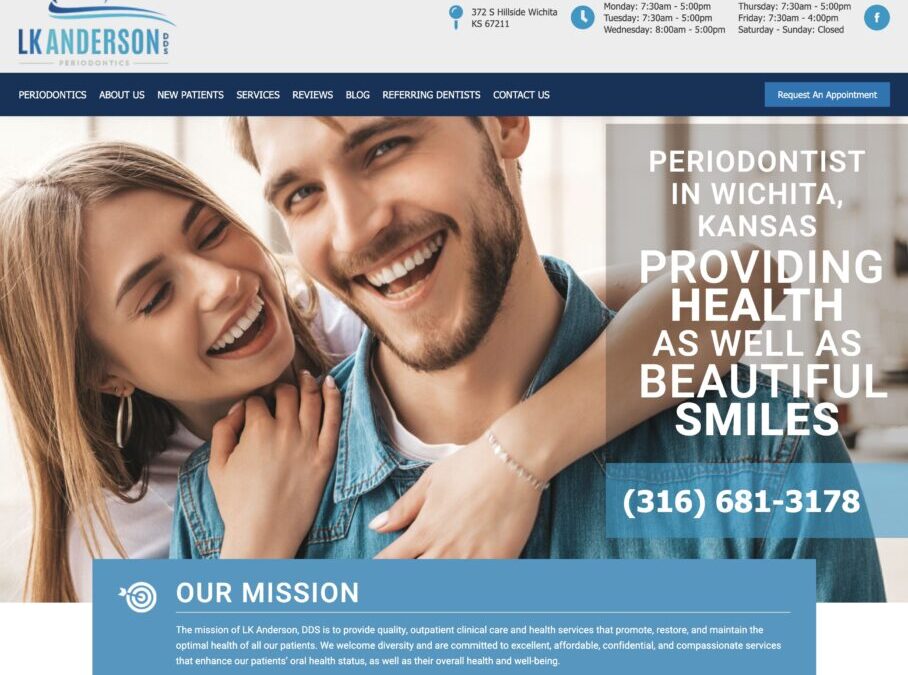Are you a dentist or orthodontist looking to increase your online visibility? Look no further! In this article, we will explore the importance of optimizing websites specifically for dental and orthodontic practices. By targeting the right keywords and implementing effective SEO strategies, you can attract more potential patients to your website and ultimately grow your practice. And if you happen to be in the Philadelphia area, we have a local SEO agency called Ortho Advertising that can help you achieve your goals. So, let’s dive in and discover how you can maximize your online presence as a dental professional.
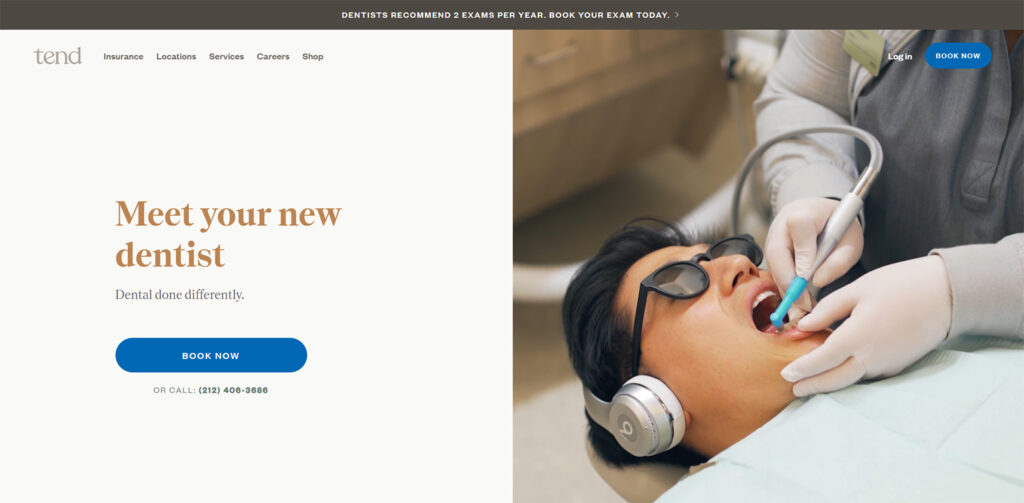
Importance of Website Optimization
Having a well-optimized website is crucial for dentists and orthodontists who want to establish a strong online presence and attract more patients. Website optimization not only increases your online visibility but also helps you stay ahead of your competitors in today’s digital age.
Increase online visibility
In order to reach a wider audience and attract potential patients, it is essential to have a website that ranks high in search engine result pages (SERPs). A well-optimized website ensures that your practice is visible to those who are actively searching for dental or orthodontic services. By implementing effective SEO strategies, you can improve your website’s visibility and increase your chances of being found by patients in need.
Attract more patients
One of the main goals of website optimization is to attract more patients to your practice. By targeting specific keywords and phrases that are relevant to dentistry and orthodontics, you can drive organic traffic to your website. This means that potential patients who are searching for services you offer will be more likely to find your website and consider contacting your practice. A well-optimized website acts as a powerful marketing tool that can help you attract and convert more patients.
Stay ahead of competitors
In today’s competitive healthcare industry, it is important to have a competitive edge over other dentists and orthodontists in your area. A well-optimized website can give you that advantage by outranking your competitors in search engine rankings. By implementing effective SEO strategies, you can ensure that your website appears higher in search results and attracts more organic traffic than your competitors. This can result in increased brand awareness, patient trust, and ultimately, more patients choosing your practice over others.
Understanding the Unique Needs of Dentists and Orthodontists
Dentists and orthodontists have unique needs when it comes to website optimization. Understanding these needs is crucial in order to develop an effective optimization strategy that caters specifically to the dental and orthodontic industry.
Specialized keywords and phrases
Keywords and phrases play a crucial role in website optimization. Dentists and orthodontists need to identify and target specialized keywords and phrases that are relevant to their services. These can include terms such as “orthodontic services,” “cosmetic dentistry,” or “braces for adults.” By implementing these keywords throughout your website, you can increase your chances of ranking high in search results when potential patients are searching for these specific services.
Local targeting for potential patients
For dentists and orthodontists, a significant portion of their target audience consists of local patients. Optimizing your website for local search is essential in order to attract patients from your local community. This involves targeting keywords with local modifiers such as “dentist in Philadelphia” or “orthodontist near me.” By implementing local SEO strategies, you can ensure that your website appears prominently in local search results, driving more targeted traffic to your practice.
Mobile-friendly design
With the increasing use of smartphones and mobile devices, it is crucial for dentists and orthodontists to have a website that is mobile-friendly. A mobile-friendly website ensures that potential patients can easily navigate and access your website on their mobile devices. This not only enhances the user experience but also contributes to improved search engine rankings. Search engines prioritize mobile-friendly websites in their search results, making it an essential aspect of website optimization for dentists and orthodontists.

Keyword Research and Implementation
Keyword research is a vital component of website optimization for dentists and orthodontists. By identifying high-volume and relevant keywords, you can effectively target your desired audience and increase your chances of ranking higher in search results.
Identifying high-volume and relevant keywords
The first step in keyword research is to identify high-volume and relevant keywords that are specific to your dental or orthodontic practice. These keywords should reflect the services you offer and be commonly used by potential patients in their search queries. Tools like Google Keyword Planner can help you identify the search volume and competitiveness of various keywords, allowing you to choose the most effective ones for your website optimization efforts.
Using long-tail keywords for specific services
In addition to targeting general keywords, it is important for dentists and orthodontists to also focus on long-tail keywords. Long-tail keywords are more specific and often consist of multiple words or phrases. For example, instead of targeting the keyword “dentist,” you can target “Invisalign provider in Philadelphia” or “emergency dental services in [location].” By incorporating long-tail keywords related to specific services you offer, you can attract more targeted traffic and increase the chances of converting potential patients.
Incorporating keywords naturally throughout the website
Once you have identified relevant keywords, it is important to incorporate them naturally throughout your website. This includes optimizing your page titles, headings, content, and meta tags with these keywords. However, it is essential to ensure that the keywords are used in a way that sounds natural and doesn’t compromise the readability of your content. Search engines prioritize websites that offer valuable and user-friendly content, so it’s important to strike a balance between keyword optimization and user experience.
Optimizing On-Page Elements
In addition to keyword optimization, there are several on-page elements that play a crucial role in website optimization for dentists and orthodontists. These elements contribute to improved user experience and search engine rankings.
Title tags and meta descriptions
Title tags and meta descriptions are HTML elements that provide information about the content of a web page. These elements appear in search engine result pages (SERPs) and play a significant role in determining click-through rates and user engagement. Dentists and orthodontists should optimize their title tags and meta descriptions by incorporating relevant keywords and providing a concise summary of what the page is about. This not only helps improve search engine rankings but also encourages users to click on your website in search results.
Optimized URLs
A well-optimized URL structure is important for both user experience and search engine optimization. Dentists and orthodontists should aim for clean and descriptive URLs that include relevant keywords. For example, instead of using a generic URL such as “www.yourwebsite.com/page1,” you can use a more descriptive URL like “www.yourwebsite.com/invisalign-philadelphia.” This not only helps search engines understand the content of your page but also improves the usability and understandability of your website for users.
Header tags (H1, H2, H3)
Header tags are HTML elements that define the headings and subheadings on a web page. These tags are not only important for organizing the content on your website but also for SEO purposes. Dentists and orthodontists should optimize their header tags by incorporating relevant keywords in a natural and informative manner. The H1 tag, which represents the main heading of a page, should contain the primary keyword or key phrase, while H2 and H3 tags can be used for subheadings and additional keywords. This helps search engines understand the structure and relevance of your content, improving your chances of ranking higher in search results.
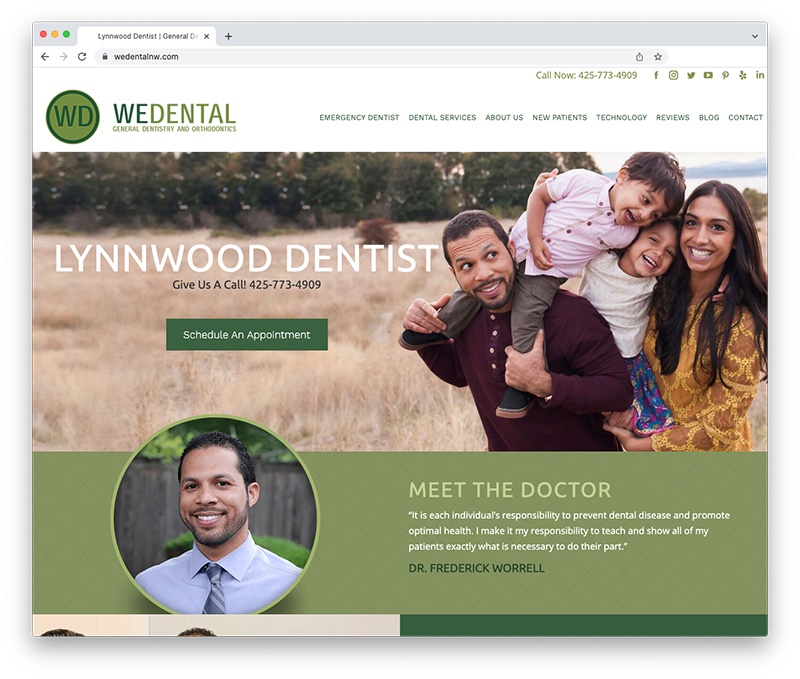
Creating Quality and Engaging Content
Content plays a vital role in website optimization for dentists and orthodontists. By creating informative and engaging content, you can not only attract more organic traffic but also establish your expertise and credibility in the dental and orthodontic field.
Informative articles on dental and orthodontic topics
One of the best ways to optimize your website is by creating informative articles on dental and orthodontic topics. These articles can cover a wide range of subjects, from oral hygiene tips to the benefits of orthodontic treatments. By incorporating relevant keywords in these articles and providing valuable information to your audience, you can increase your website’s visibility in search results and attract potential patients who are actively seeking information about dental and orthodontic care.
Case studies and patient testimonials
Case studies and patient testimonials are powerful tools for website optimization for dentists and orthodontists. By showcasing successful treatments and satisfied patients, you can build trust and credibility among your website visitors. These testimonials and case studies can be incorporated into your website’s content or showcased as separate sections. Including keywords related to specific treatments or patient experiences can further enhance the optimization of these elements.
Regularly updated blog section
Having a regularly updated blog section is another effective way to optimize your website for dentists and orthodontists. By consistently publishing fresh and relevant content, you not only provide value to your audience but also increase the frequency of search engine crawls on your website. This can result in improved search engine rankings and increased opportunities for your target audience to discover your website. Remember to incorporate relevant keywords in your blog posts and make it easy for your readers to share the content on social media platforms for further optimization.
Implementing Local SEO Strategies
Implementing local SEO strategies is essential for dentists and orthodontists who want to attract patients from their local communities. By optimizing your website for local search, you can increase your visibility among potential patients who are searching for dental or orthodontic services in your area.
Optimizing Google My Business listing
Google My Business (GMB) is a powerful tool for local SEO optimization. Dentists and orthodontists should claim and optimize their GMB listings by providing accurate and up-to-date information about their practices, including address, phone number, business hours, and services offered. By optimizing your GMB listing, you increase your chances of appearing in Google’s local pack and attracting potential patients who are searching for dental or orthodontic services in your area.
Local directory and citation management
In addition to optimizing your GMB listing, dentists and orthodontists should ensure that their practice information is consistent and accurate across all local directories and citation sources. This includes popular directories such as Yelp, Yellow Pages, and Healthgrades. Consistent NAP (Name, Address, Phone Number) information is crucial for search engines to understand the geographical relevance and credibility of your practice. By managing your local directory listings and citations, you enhance your local SEO efforts and increase your chances of appearing in local search results.
Location-specific landing pages
To further optimize your website for local search, consider creating location-specific landing pages. For dentists and orthodontists who have multiple locations or serve patients in different areas, these landing pages can help target specific geographical keywords and increase your chances of appearing in localized search results. Each landing page should provide unique and valuable information about your practice in that specific location, including address, contact information, and testimonials from local patients. By creating these location-specific landing pages, you can effectively cater to potential patients in different areas and enhance your local SEO strategy.
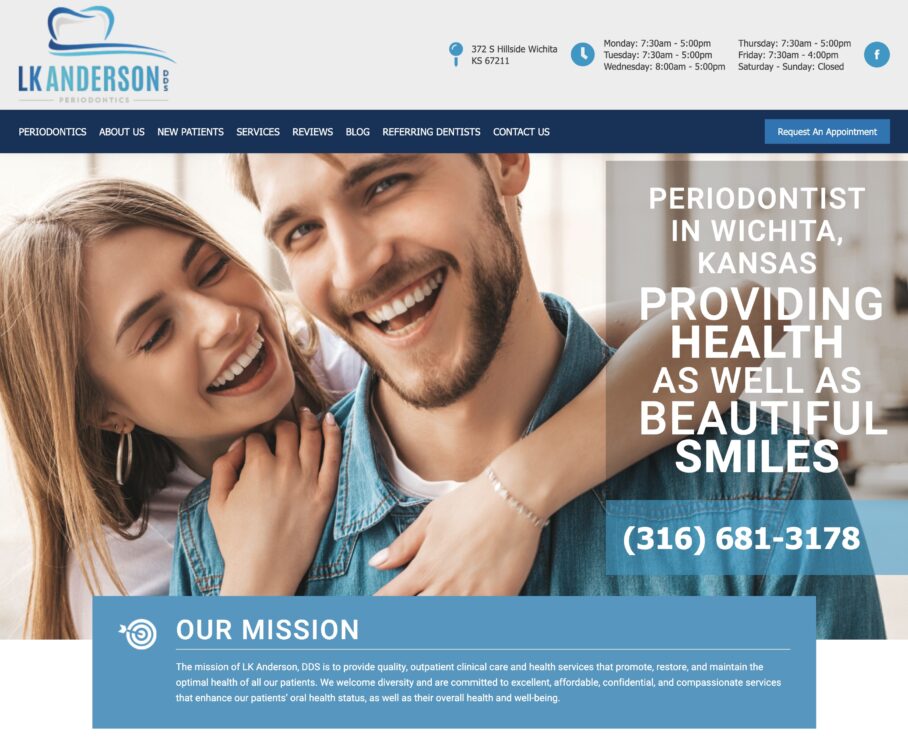
Leveraging Social Media for Website Optimization
Social media platforms offer excellent opportunities for dentists and orthodontists to optimize their websites and attract more patients. By creating engaging social media profiles and regularly sharing informative content, you can increase your online visibility and drive traffic to your website.
Creating engaging social media profiles
When leveraging social media for website optimization, it is important to create engaging profiles that showcase your expertise and services. Dentists and orthodontists should ensure that their social media profiles provide accurate and up-to-date information about their practices, including contact details, website link, and a brief overview of the services offered. Use high-quality images or videos to make your profiles visually appealing and reflective of your practice’s professionalism.
Regularly sharing informative content
In order to attract and engage your social media followers, it is important to regularly share informative content. This can include dental and orthodontic tips, treatment updates, patient success stories, or industry news. By sharing valuable content, you establish yourself as an authority in your field and encourage your followers to visit your website for further information. Remember to optimize your social media posts with relevant keywords and make it easy for your audience to share your content with their networks.
Encouraging patient reviews and testimonials
Positive patient reviews and testimonials are powerful social proof that can significantly impact your website’s optimization efforts. Encourage your patients to leave reviews on platforms like Google, Facebook, or Yelp, and showcase these reviews on your website and social media profiles. This not only enhances your credibility but also has a positive impact on search engine rankings. Search engines prioritize websites with high-quality reviews, making it essential to gather and showcase patient feedback for website optimization purposes.
Utilizing Video and Image Optimization
Incorporating optimized videos and images into your website can greatly enhance user engagement and improve your website’s optimization efforts. By adding alt tags to images, creating descriptive video titles and captions, and embedding videos throughout your website, you can enhance the overall user experience and increase your chances of ranking higher in search results.
Adding optimized alt tags to images
Alt tags, also known as alternative text, are HTML attributes that describe the content of an image. Dentists and orthodontists should optimize their images by adding relevant alt tags that incorporate keywords. Alt tags not only enable search engines to understand the content of your images, but they also improve accessibility for users who may have visual impairments or are using assistive technologies.
Creating descriptive video titles and captions
Videos are a valuable tool for engaging website visitors and conveying information effectively. When optimizing videos, dentists and orthodontists should create descriptive titles that incorporate relevant keywords. This not only helps search engines understand the content of your videos but also improves their visibility in search results. Additionally, providing captions and transcripts for your videos can further enhance their accessibility and optimization.
Embedding videos to improve user engagement
Embedding videos throughout your website can greatly enhance user engagement and increase the time visitors spend on your website. Videos can be used to showcase patient testimonials, explain complex dental or orthodontic procedures, or provide educational content. By incorporating videos into your website’s content, you provide a multi-dimensional experience for your audience that can help establish trust and increase the likelihood of converting potential patients.
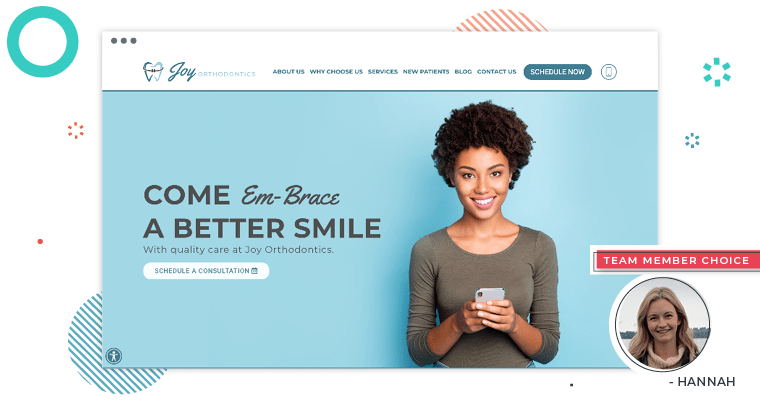
Enhancing Website Speed and Performance
Website speed and performance are crucial factors in website optimization for dentists and orthodontists. A fast-loading and responsive website not only enhances user experience but also contributes to improved search engine rankings.
Optimizing image sizes and file formats
Large image files can significantly slow down your website’s loading speed. Dentists and orthodontists should optimize their images by resizing them to the appropriate dimensions and compressing them to reduce file size. This helps improve your website’s loading speed without compromising the quality of the images. Additionally, choosing the right file format, such as JPEG or PNG, can further enhance the optimization of your images.
Minifying HTML, CSS, and JavaScript
Minifying HTML, CSS, and JavaScript files is another effective way to improve website speed and performance. Dentists and orthodontists can use various tools and plugins to remove unnecessary white spaces, line breaks, and comments from their code, reducing file size and improving loading speed. This optimization technique helps search engines crawl and index your website more efficiently, resulting in improved search engine rankings.
Enabling browser caching and compression
Enabling browser caching and compression enhances website performance by reducing the amount of data that needs to be transferred between the server and the user’s browser. Dentists and orthodontists can configure their website settings or use caching and compression plugins to enable these features. Browser caching stores certain elements of your website on the user’s browser, allowing for faster page load times upon subsequent visits. Compression reduces the size of files sent from the server to the user’s browser, resulting in faster loading times.
Monitoring and Analyzing Website Data
Monitoring and analyzing website data is essential for dentists and orthodontists who want to make data-driven optimization decisions. By setting up Google Analytics, tracking website traffic and user behavior, and utilizing other analytics tools, you can gain valuable insights that can help improve your website’s performance.
Setting up Google Analytics
Google Analytics is a powerful analytics tool that provides comprehensive data about website traffic, user behavior, and conversion rates. Dentists and orthodontists should set up Google Analytics on their websites in order to track and analyze data related to their optimization efforts. This data can help identify areas where improvements can be made, understand user engagement trends, and measure the effectiveness of various optimization strategies.
Tracking website traffic and user behavior
Monitoring website traffic and user behavior is crucial in order to understand how users interact with your website. Dentists and orthodontists should track metrics such as the number of website visitors, page views, bounce rates, and average session duration. This data can provide insights into the effectiveness of your optimization efforts, identify areas for improvement, and help you make data-driven decisions to enhance user experience and increase conversions.
Making data-driven optimization decisions
By analyzing website data, dentists and orthodontists can make informed optimization decisions. Data can help identify high-performing pages, popular keywords, and areas that need improvement. By leveraging this data, you can refine your optimization strategies, create targeted content, and enhance user experience. Regularly monitoring and analyzing website data allows for continuous improvement and ensures that your website remains optimized for both search engines and users.
In conclusion, website optimization plays a crucial role in the success of dentists and orthodontists in today’s digital landscape. By understanding the unique needs of the industry, conducting thorough keyword research, optimizing on-page elements, creating quality content, implementing local SEO strategies, leveraging social media, optimizing videos and images, enhancing website speed and performance, and monitoring website data, dentists and orthodontists can effectively increase their online visibility, attract more patients, and stay ahead of competitors. With a well-optimized website, dentists and orthodontists can establish their expertise, build trust, and attract the patients they desire.

